Why Crowns for Baby Teeth is necessary?
Why a dentist would cap baby teeth?
It is necessary for a dentist to seat a crown, called a cap by those not in the dental field, on decaying baby teeth so the child can develop healthy permanent teeth. Many parents do not understand the importance of healthy baby teeth in developing healthy permanent teeth.
Most dentists will use stainless steel crowns for baby teeth. A stainless steel crown is less expensive than porcelain and more durable, making it the best choice.
Some people are born with naturally harder teeth than others and those with softer teeth experience more dental decay. The child’s dentist will at first recommend the use of a sealant on the teeth to help prevent decay. However, sealants are not enough alone to prevent decay. The child’s parents must also see that their child follows through with proper brushing and flossing techniques in order to prevent cavities.
Too vigorous brushing can lead to the sealant being damaged and sealants will wear down naturally over a period of time. Therefore, it is necessary for the parent to remain in the room with the child while the child is brushing and flossing. It is also necessary for the parent to see the child has routine dental visits.
You might be interested in:
Decaying baby teeth can cause cavities in the permanent teeth being formed below the gum line. If a decayed tooth is pulled it leaves a gap. This can, and usually does, lead to shifting of the other teeth in the mouth. Not only will the baby teeth become crooked, so will the forming permanent teeth. This is particularly true with back teeth.
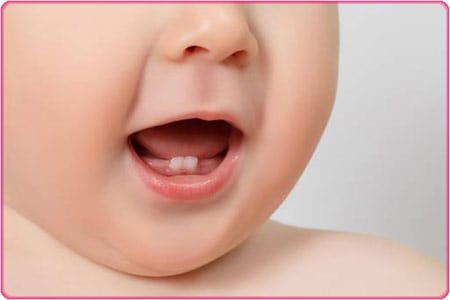
There may be a long period of time between when the baby tooth is lost and the permanent tooth would erupt. The longer the period of time between the two, the more shifting can take place. Crooked teeth lead to the need for braces.
If sealants are not working for the child, the dentist has no option but to crown the teeth. The child will accept the silver-colored teeth without problem as long as the parents do not voice their dismay in front of the child. In my years in the dental field I saw many children who seemed rather proud of their new silver teeth.
A parent is their child’s first line of defense against cavities and loss of teeth. It is an act of love of a responsible parent to see that their child receives routine dental exams and follows proper dental hygiene techniques. The same holds true for following through with the dentist’s recommendations for necessary dental treatment.

When Are Crowns Used in Primary Teeth?
A crown is a cover placed over the entire tooth that is made to look like a tooth. It is used for teeth that are badly damaged or decayed. Many people call this a “cap”. In children, crowns are used for several reasons.
It’s important to try to save primary teeth until they are ready to fall out on their own. Primary teeth are important for several reasons:
- Chewing food
- Allowing speech to develop normally
- Maintaining spaces for the permanent teeth
- Guiding the permanent teeth into position
A cap is one way to treat severe tooth decay. If decayed primary teeth are not treated, the infection can spread in the mouth. Pain and infection can lead to other health problems as well.
Molars
Molars are the teeth in the back of the mouth. They are used primarily for chewing. There are eight primary molars. Dentists will use a crown on children’s primary molars in several cases:
- When a primary or young permanent tooth has extensive decay, often on three or more surfaces
- When a filling would be very large because large fillings can weaken the tooth and make it more likely to break
- When a primary tooth has not developed normally
- When a child with high levels of decay is also disabled or has poor oral hygiene habits. In this case, the crown will protect the tooth from further decay.
Front
The front teeth include the incisors and canines. They are used primarily for biting. There are four primary incisors and two primary canines in each jaw (upper and lower). Dentists place crowns on these front teeth when:
- There are large areas of decay on several surfaces.
- The tooth has undergone root canal therapy (endodontic therapy).
- The tooth has been broken and part of it has been lost.
- The tooth did not develop normally.
- The tooth is discolored and the parent or child is concerned about how it looks.
Your child may need a crown even for a relatively small cavity in a primary tooth. That’s because primary teeth are smaller than permanent teeth and have thinner enamel (outer layer of the tooth). A crown may be needed to strengthen the tooth and protect it from breaking or cracking.
Types of Crowns for babies
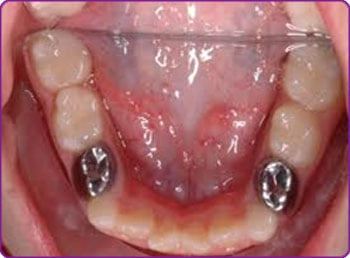
Pre-formed, stainless steel crowns are the most common crowns used in primary teeth. They are made as metal shells of varying sizes that can be customized to fit any tooth. These crowns have been used in children for 50 years. They are durable and relatively easy to place.
Because a crown covers the entire tooth, it protects it from decay. Studies have shown that stainless steel crowns are about half as likely as amalgam fillings to need replacement.
Other types of crowns used in children’s teeth include:
- Strip crowns — These also are called acid-etched resin crowns. They are made using a form that is filled with plastic material and placed over the tooth. The durability of a strip crown depends on how much tooth is left and how well the tooth was prepared for the crown. Strip crowns take longer to place than stainless steel crowns, but not as long as open-faced steel crowns. Injury to the tooth can break, loosen, or dislodge this type of crown.
- Open-faced steel crowns — The front area of a steel crown is cut away and replaced with tooth-colored plastic. These crowns look nicer than stainless steel crowns, but some metal usually shows at the edges and on the back of the tooth. These crowns are very durable and stay in place well.
- Veneered steel crowns — These crowns have a tooth-colored face bonded to the front. They look good and last well. However, facings occasionally break or pop-off.
If you have a baby tooth with decay, the usually restorative option is a white filling. If the decay is extensive, a crown may be recommended. There are few options when it comes to crowns for baby teeth. For back baby teeth, there really is nothing better than the good ole’ stainless steel crowns.
They are relatively easy to do and last till the teeth normally fall out. Since they are in the back, cosmetics are not as much of a concern. They are available for the front teeth and work quite well. However, most people don’t want “silver” in the front. I don’t blame them.
Pedo-Jacket crowns

Stainless Steel Crowns
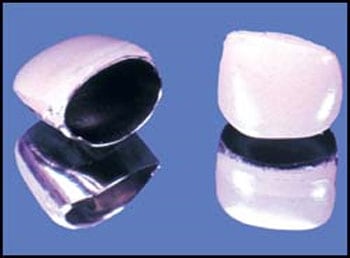
So, are white crowns nice for front baby teeth? Yes. There are several types each of which has benefits and drawbacks. A porcelain crown like you do on adult teeth is really not an option for those little baby teeth. The baby teeth simply are too small. A Stainless steel crown is good but looks bad.
There is a thing called a NuSmile crown that is basically a stainless steel crown with something white coating the front. It is harder to place and looks a little fake (sort of a harsh white) especially if there is just one there. In addition, the white stuff on the front sometimes chips off. Another white option is a “Strip” crown.
This is basically a clear form that is filled with white filling material and placed over the tooth. After light curing, the outer clear shell is removed leaving basically a white filling all around the tooth. This option looks the most natural but is also the most fragile. It can only be used if there is a good bit of tooth structure remaining after decay removal and crown preparation.
One option we use a lot is the ”Pedo-Jacket” crown. This is basically a white plastic shell you place in a similar manner to the strip crowns. You can either remove the outer shell like a strip crown or leave it on there, which is the usual method. They look good, but sometimes kids chew through the outer shell which causes problems.
So, in summary, there is no magic bullet. All crowns have some kind of drawback. This is very frustrating for us and for parents. Kids are so rough on their teeth. Again, it should be noted is very unusual to do porcelain crowns for baby teeth. There are many reasons why they are not ideal.
Strip Crowns
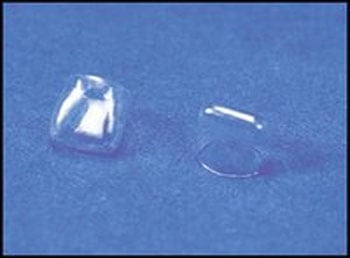
Stainless steel crowns with white coating

Crowns for baby teeth can be fitted in a single appointment
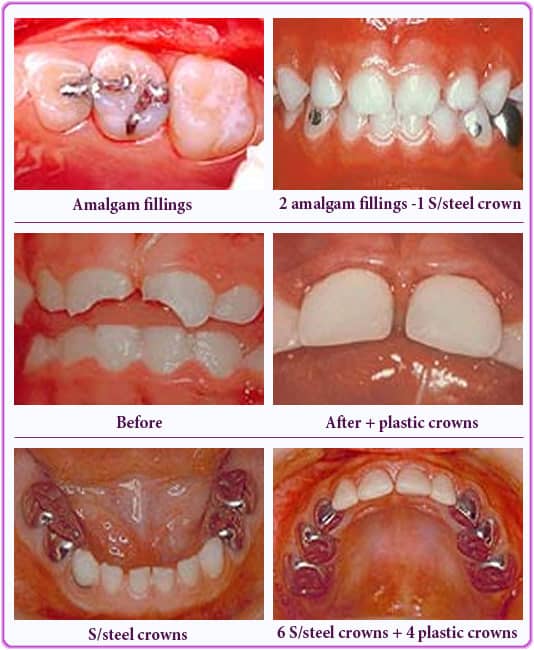
Services
Working Time
- Monday - Friday: 08:00 - 19:00
- Saturday: 08:00 - 18:00
- Sunday closed
Contact Info
- Hotline 1: (+84) 908 321 455
- Hotline 2: (+84) 931 857 885
- Mobile: (+84) 8 3925 8778
- Phone: (+84)2 838 258 778
- info@dentalrose.net
- rosedentalclinicvn@gmail.com
 English
English  Tiếng Việt
Tiếng Việt

